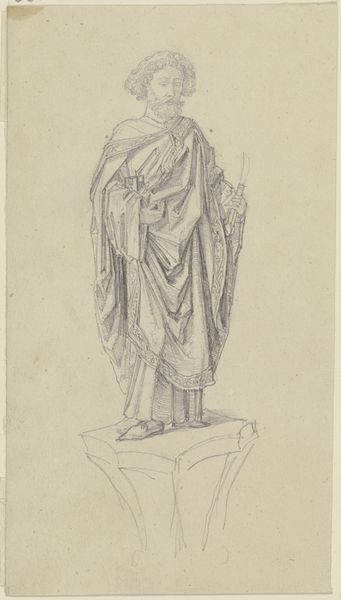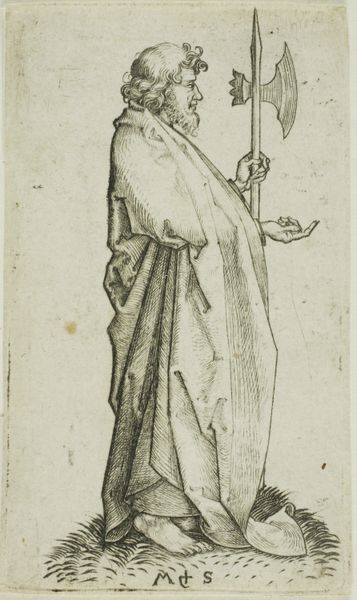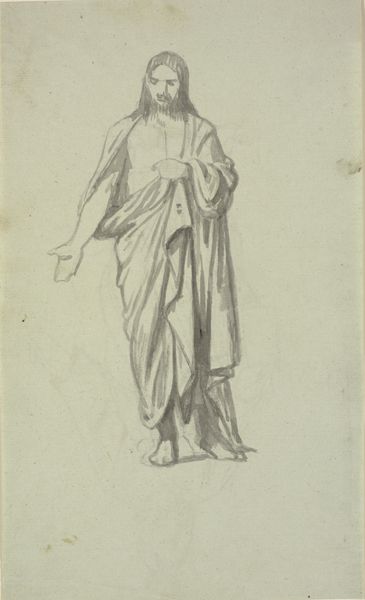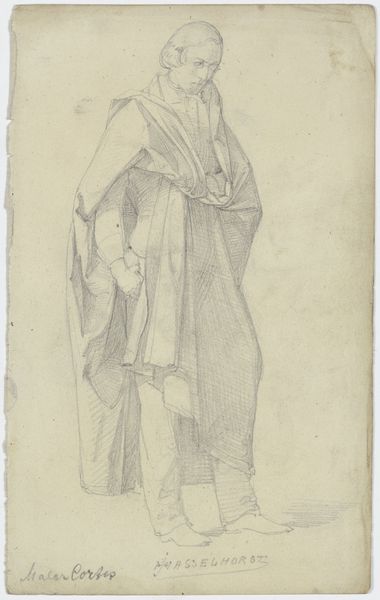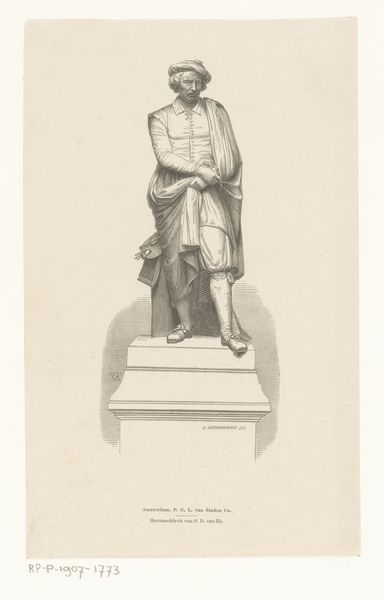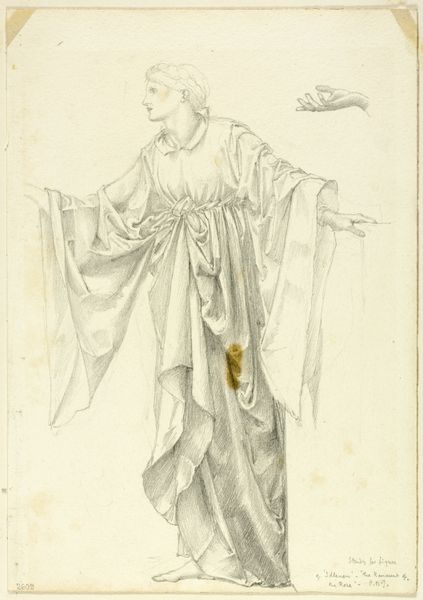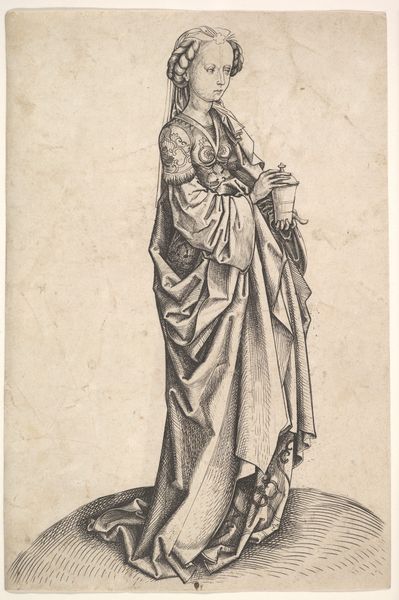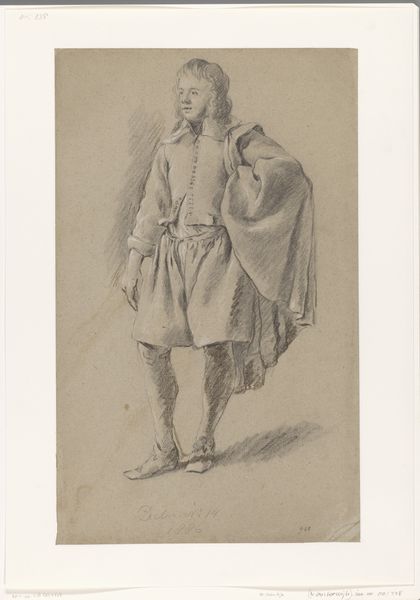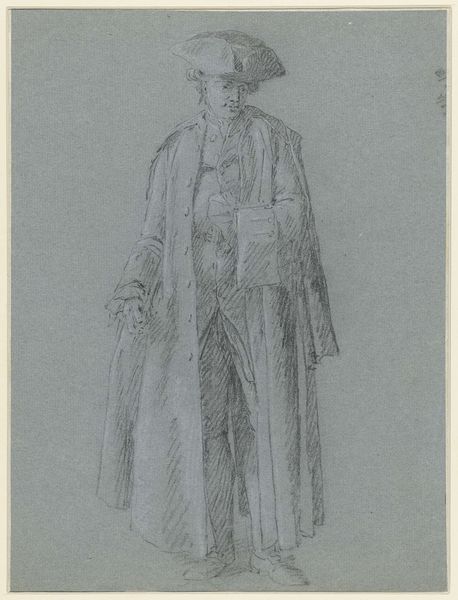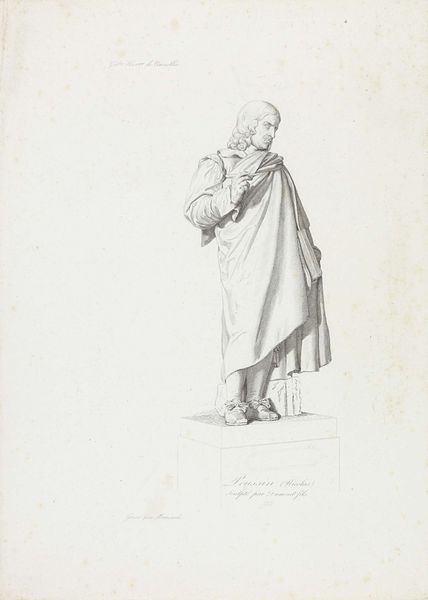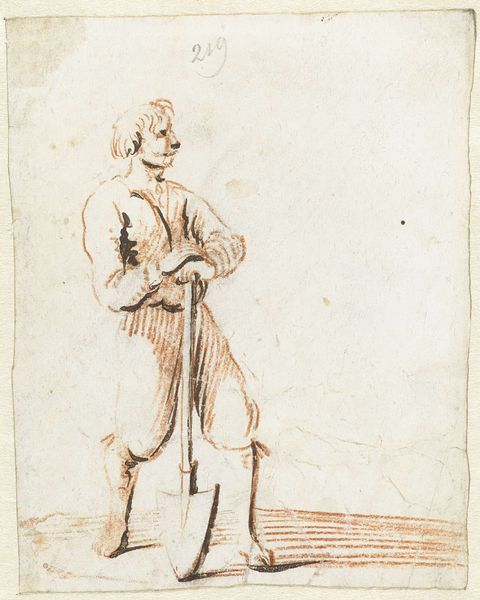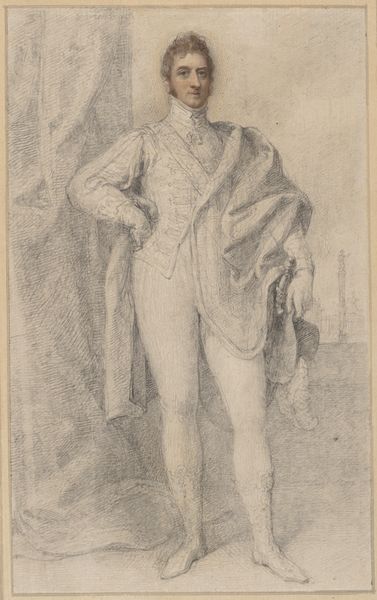
drawing, print, paper, ink, pencil, graphite, pen
#
portrait
#
drawing
# print
#
pencil sketch
#
figuration
#
paper
#
form
#
ink
#
classicism
#
ancient-mediterranean
#
pencil
#
line
#
graphite
#
pen
#
academic-art
#
realism
Dimensions: 504 × 382 mm
Copyright: Public Domain
Editor: Here we have John Downman's "Antique Statue of Standing Draped Woman," created in 1774 using ink, graphite, and pencil on paper. It’s a delicate sketch, almost ethereal in its lightness. What strikes you about this work? Curator: I see a study in power dynamics, refracted through the lens of classicism. Consider the historical context: 1774, right on the cusp of revolutionary fervor. The figure, derived from idealized Greek or Roman forms, stands as a symbol of authority, but is also, interestingly, a copy. Downman’s act of redrawing the statue calls attention to how power is constructed, mediated, and ultimately, mutable. Doesn’t the sketched nature of the image also imply something about the precarity of those ideals? Editor: That's fascinating. So, you’re suggesting that even while emulating classical ideals, the artist subtly undermines them by using impermanent materials and suggesting instability? Curator: Precisely. The very act of drawing, instead of sculpting, the form introduces a level of artistic interpretation and questions our relationship to legacies of power. What are the implications when men draw women figures like this? Editor: That raises a good point – the gaze and its historical context certainly influences interpretation. It feels relevant when examining classicism and it's place within art history. Curator: Exactly. And the ‘unfinished’ quality? We’re left contemplating the incomplete project of emulating classical authority, a project rife with implications about gender, representation, and power in the late 18th century. Food for thought, wouldn't you say? Editor: Absolutely. It's challenged how I initially viewed this drawing.
Comments
No comments
Be the first to comment and join the conversation on the ultimate creative platform.
